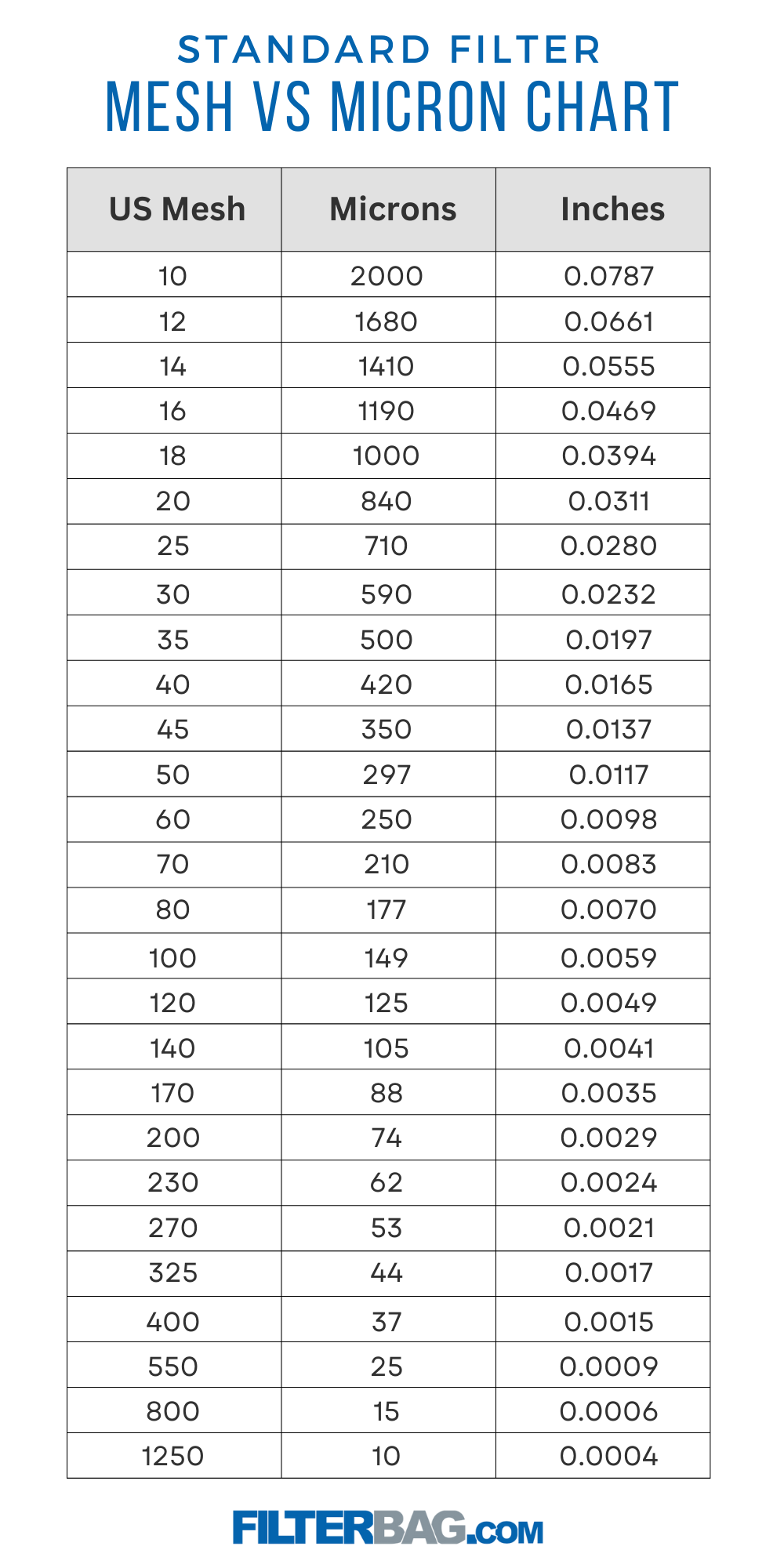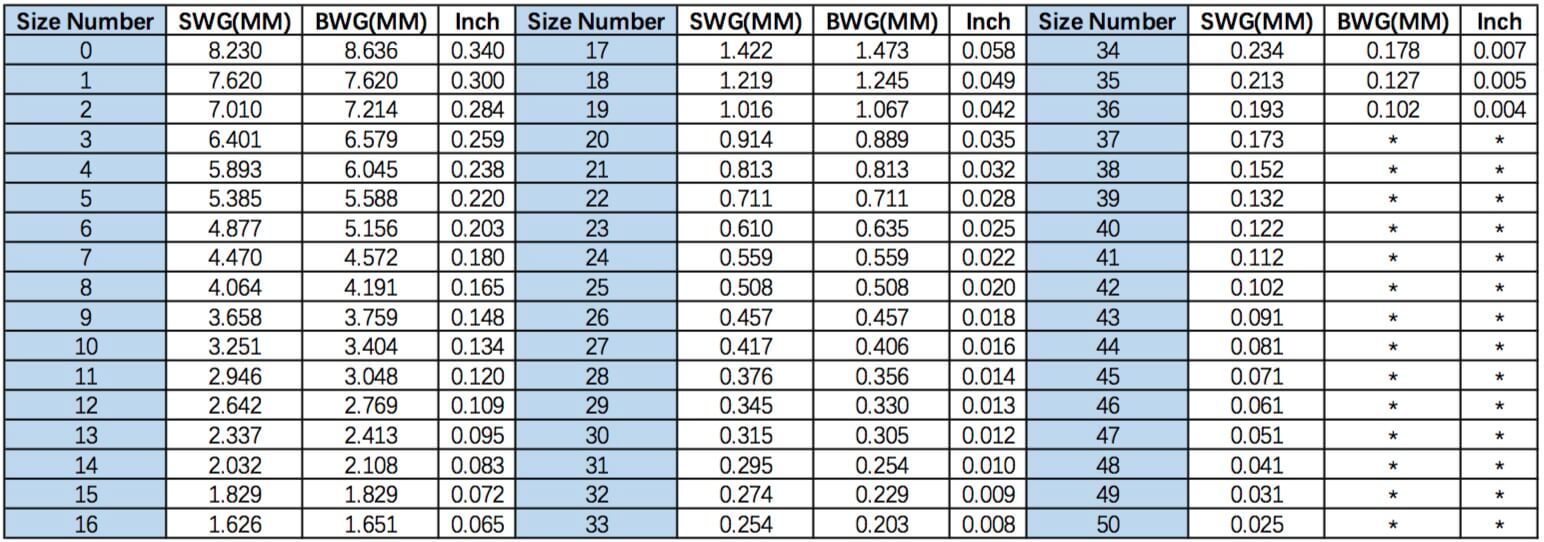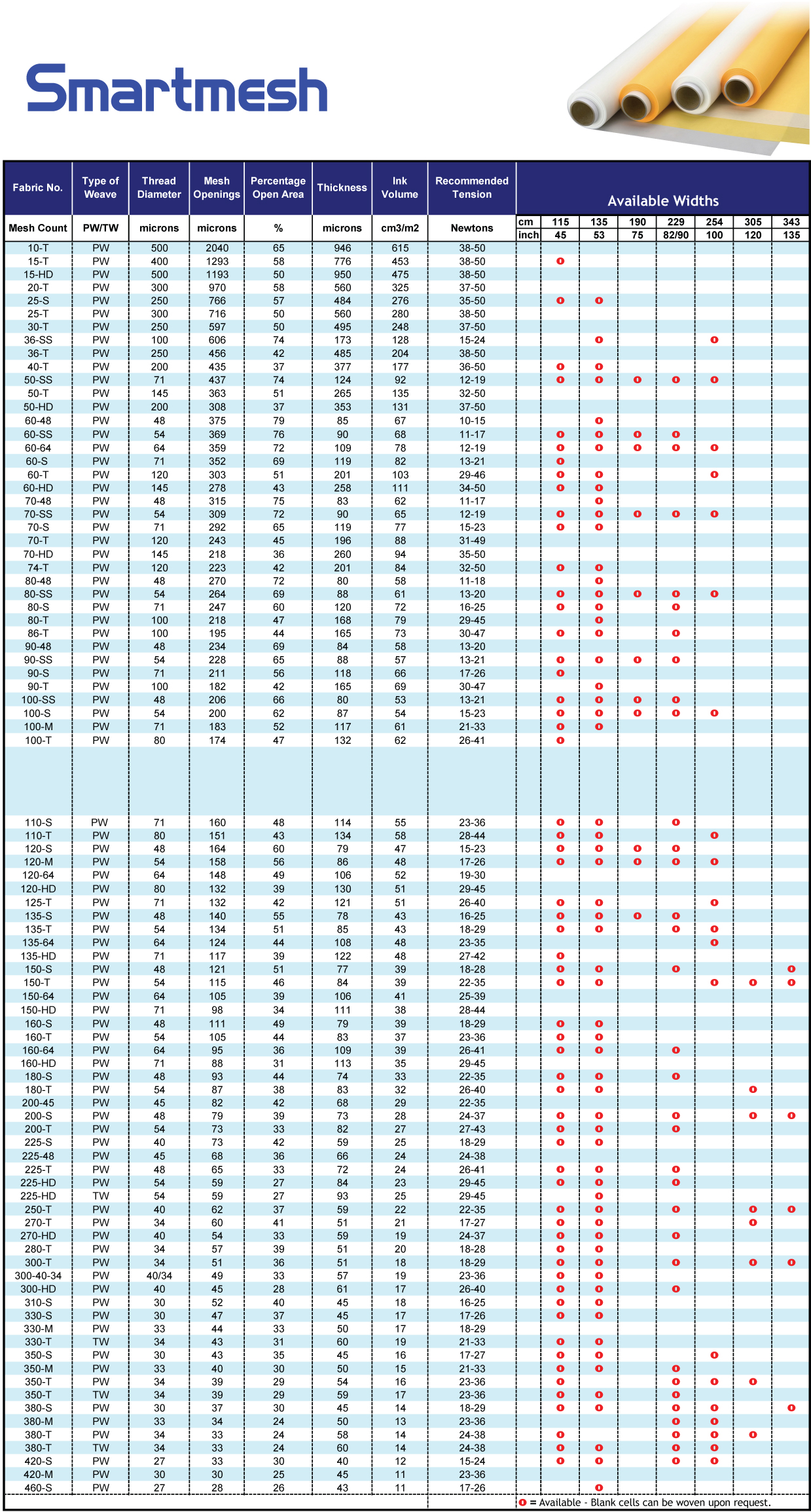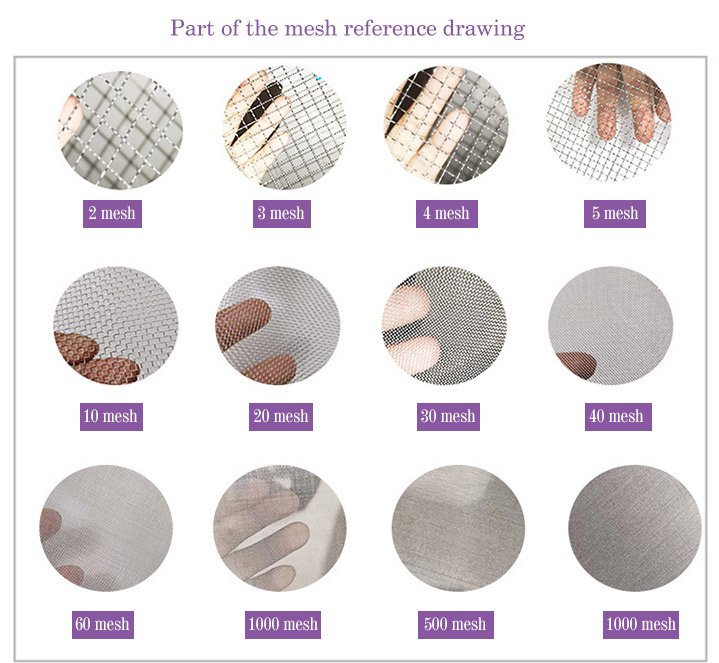Two accepted scales are the us sieve and tyler mesh or equivalent scales. Web particle size to screen mesh conversion chart. Web mesh size usually is referring to the mesh number (a us measurement standard) and its relationship to the size of the openings in the mesh and thus the size of particles that can pass through these openings. These values are generally accepted as accurate but are approximates because the thickness of the wire used to make a specific screen will vary the number of openings in the one square inch. A table is provided that allows correlations between the two scales.
Web the most standard mesh counts in screen printing are 110 and 156. Web mesh size usually is referring to the mesh number (a us measurement standard) and its relationship to the size of the openings in the mesh and thus the size of particles that can pass through these openings. 156 mesh also lays down a thick layer of ink but offers higher detail. As the number indicating the mesh size increases, the size of the openings and thus the size of particles captured by the screen decreases. Two accepted scales are the us sieve and tyler mesh or equivalent scales.
Screen doors keep bugs out if the mesh is fully intact. Web screen mesh size refers to the number of threads per inch in the mesh fabric, and it can affect factors such as ink coverage, detail, and opacity. Mesh size depends on the number of openings per inch — a #4 mesh has four openings per square inch, while a #16 mesh has 16 openings. Web sieving is a practical and cost effective way to determine particle size distributions for coarser materials. Web mesh size usually is referring to the mesh number (a us measurement standard) and its relationship to the size of the openings in the mesh and thus the size of particles that can pass through these openings.
Web sieving is a practical and cost effective way to determine particle size distributions for coarser materials. Web particle size to screen mesh conversion chart. Sweco does not carry all mill grade meshes. A table is provided that allows correlations between the two scales. Here are some things to keep in mind when choosing the right screen mesh size for your screen printing project: Web mesh size usually is referring to the mesh number (a us measurement standard) and its relationship to the size of the openings in the mesh and thus the size of particles that can pass through these openings. Web screen mesh size refers to the number of threads per inch in the mesh fabric, and it can affect factors such as ink coverage, detail, and opacity. Web by providing detailed information on mesh counts, wire diameters, and the resulting open area percentages, a wire mesh size chart makes it easier to compare different screens, ensuring the chosen mesh meets the required criteria for filtration, strength, and transparency. 156 mesh also lays down a thick layer of ink but offers higher detail. These values are generally accepted as accurate but are approximates because the thickness of the wire used to make a specific screen will vary the number of openings in the one square inch. Stainless steel mesh · screen mesh roll · mesh screen filter Screen doors keep bugs out if the mesh is fully intact. 110 mesh lays a fairly thick layer of ink down. Web the most standard mesh counts in screen printing are 110 and 156. Mesh size depends on the number of openings per inch — a #4 mesh has four openings per square inch, while a #16 mesh has 16 openings.
110 Mesh Lays A Fairly Thick Layer Of Ink Down.
Sweco does not carry all mill grade meshes. Web by providing detailed information on mesh counts, wire diameters, and the resulting open area percentages, a wire mesh size chart makes it easier to compare different screens, ensuring the chosen mesh meets the required criteria for filtration, strength, and transparency. Screen doors keep bugs out if the mesh is fully intact. A table is provided that allows correlations between the two scales.
Stainless Steel Mesh · Screen Mesh Roll · Mesh Screen Filter
These values are generally accepted as accurate but are approximates because the thickness of the wire used to make a specific screen will vary the number of openings in the one square inch. Web particle size to screen mesh conversion chart. Web mesh size usually is referring to the mesh number (a us measurement standard) and its relationship to the size of the openings in the mesh and thus the size of particles that can pass through these openings. Here are some things to keep in mind when choosing the right screen mesh size for your screen printing project:
Read Ratings & Reviewsfast Shippingshop Our Huge Selectiondeals Of The Day
Web the chart below shows the approximate size in inches and microns for various mesh sizes. Web the most standard mesh counts in screen printing are 110 and 156. 156 mesh also lays down a thick layer of ink but offers higher detail. Two accepted scales are the us sieve and tyler mesh or equivalent scales.
Mesh Size Depends On The Number Of Openings Per Inch — A #4 Mesh Has Four Openings Per Square Inch, While A #16 Mesh Has 16 Openings.
As the number indicating the mesh size increases, the size of the openings and thus the size of particles captured by the screen decreases. Web sieving is a practical and cost effective way to determine particle size distributions for coarser materials. Web screen mesh size refers to the number of threads per inch in the mesh fabric, and it can affect factors such as ink coverage, detail, and opacity.








